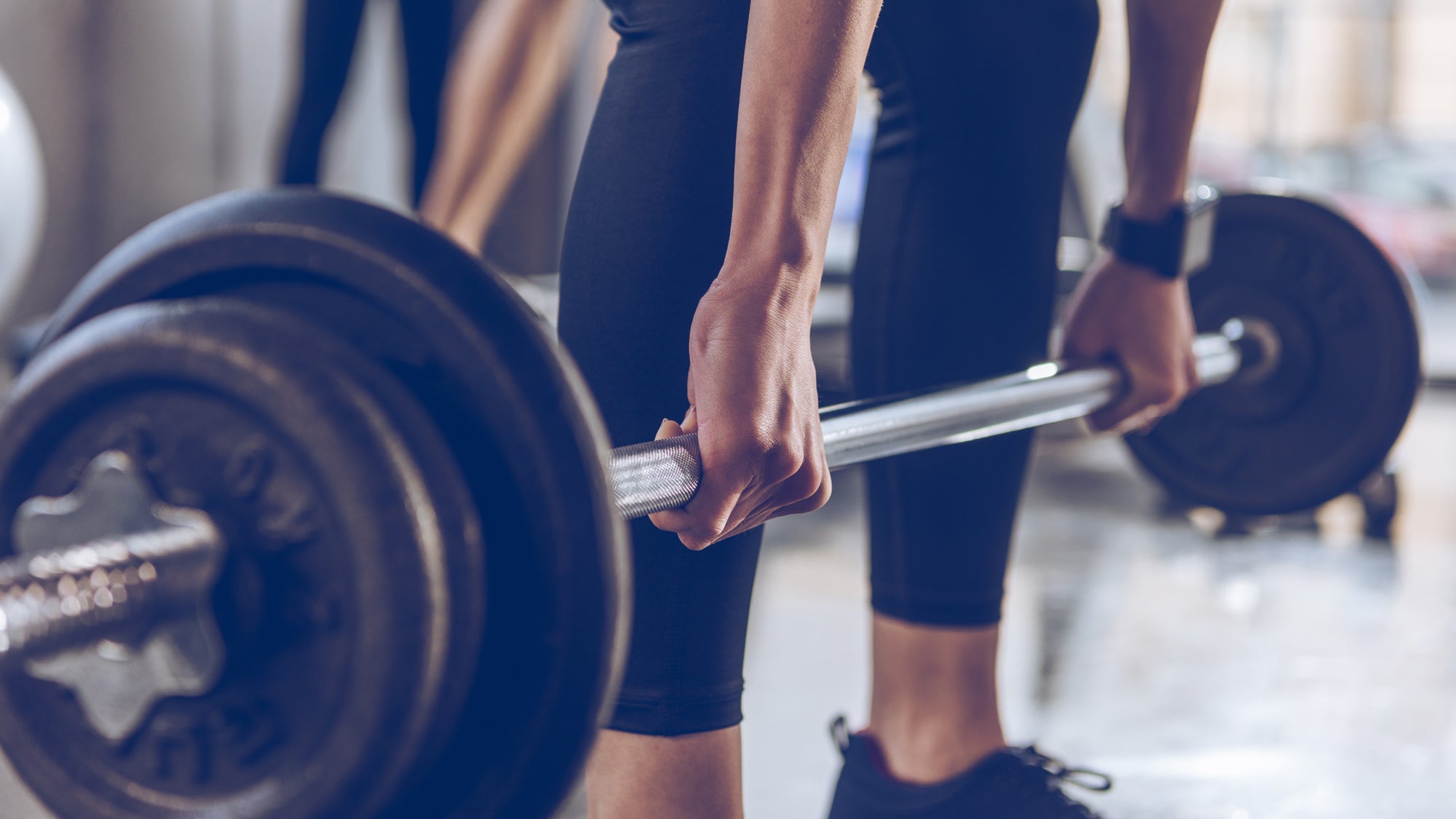Why Men and Women Shouldn’t Follow the Same Strength Plan

Most strength work is presented as a general prescription: For stronger glutes, do X exercise; The Y move will yield a more stable core. It’s generally accepted, then, that what works in the weight room for one athlete will work for another. But that’s not quite true, especially when it comes to the differing physiological makeup of male and female athletes. Specifically, strength training for women should differ from strength training for men.
“Strength training should be the furthest thing from a one-size-fits-all approach,” says Menachem Brodie of Human Vortex Training. “Far more than swim-bike-run training plans, strength training programs require personalization to a far higher degree.”
This is particularly important to note when prescribing weight room work for women. The majority of books and articles on strength training for triathletes today are written with the assumption that what works for men will work for women. The emphasis here, however, should be on “assumption.” More and deeper research on the physiological makeup of female endurance athletes dispels the notion that women are just like men, only smaller. As such, the work they do in the weight room shouldn’t necessarily mirror that of their male counterparts.
The Hormone Factor
Unlike men, whose hormones remain fairly stable from day to day, women experience fluctuating hormones as part of their menstrual cycle. The first half of the menstrual cycle, known as the follicular phase, lasts approximately 14 days, during which there is little to no difference in the responses to strength training between men and women. But recent research, especially that done by Dr. Stacy Sims, shows in the second half of the cycle, known as the luteal phase, a woman’s body enters a high-hormone, more catabolic state.
“This means that during the luteal phase, women’s training needs change significantly,” Brodie explains. “Especially if you want to be able to continue to build strength and power through your strength training and sport-specific sessions.”
Research shows that periodization of training in line with the menstrual cycle yields the best results. Brodie recommends scaling back the strength sessions during the luteal phase – half of the frequency of what one would normally do in a week (so if strength work takes place four days a week in the follicular phase, only hit the weights twice a week during the luteal phase). It’s also important to perform work at a lower perceived effort. “Lighter weights will be used, and more time between the strength sessions may be needed in order to keep a good hormonal status conductive to performance gains.”
Studies also show that nutrient timing is more critical for women than men, especially during the luteal phase. Because the body is in a catabolic state during this time, intense workouts (like strength sessions) should be followed by a meal with 40 grams of mixed protein within 30 minutes of finishing the session.
The Forces at Play
When it comes to running and jumping, women are up to 10 times more likely than men to experience ACL tears in the knee. This is because of how the knee and hip interact – the space through which the ACL passes, known as the intercondylar notch, is naturally smaller in women than in men. Women are also more likely to have a “knock-knee” alignment, in which their knees bend inward with every footstrike.
Because of this, It’s particularly important for women to build up hip strength and the deep abdominal muscles with a regular activation and strengthening routine. The circuit Brodie recommends includes a prone glute activation, chin-tuck head lift, dynamic side planks, figure-4 hip lifts, half clamshells, and bird-dog progressions. These moves can all be performed as part of a warm-up to a run, or as a stand-alone circuit.
Postpartum isn’t a Temporary Designation
Though plenty of articles advise women on how to “bounce back after baby,” few take a long-term view of strength work for women who have given birth. Post-pregnancy issues such as pelvic floor disorder and diastastis (a separation of the abdominal muscles) can cause a host of unpleasant and uncomfortable symptoms for athletic women, and many strength training programs incorrectly assume that garden-variety core work can rectify pregnancy-related symptoms. Instead, post-pregnancy conditions often require unique, female-specific strength work performed long after a woman has “bounced back.”
“Keep in mind that postpartum is forever after having a baby,” says Brodie. “If you had prolapse or your diastasis has yet to fully heal, find a postpartum corrective exercise specialist or pelvic floor physical therapist to help you address these really important issues. Not only can this save you pain and suffering in your training and racing, but it can have long-lasting impact on your general health and well-being in the future.”
Train Like a Woman
Men and women who do the exact same strength routine shouldn’t expect to get the exact same results. “Due to hormonal differences, it is much harder for women to pack on the pounds of muscle than it is for their male counterparts,” says Brodie.
But another reason some women may have difficulty building muscle might lie in their mindset, says Brodie. “Historically, women’s fitness has leaned very heavily toward light weights for women, fanning the fire that women shouldn’t lift heavy weights or they’ll look manly.” This belief holds some women back in the weight room, keeping them from getting the power they’re looking for.
Brodie says women have a lot to gain by lifting heavy in what he calls the fundamental movements of push, pull, squat, hinge, press and rotary stability. Learn how to perform the fundamental moves properly, then add heavy weights to the routine, building towards sets of 3 to 6 repetitions. “These moves can and should be worked by women, especially runners and triathletes, who place great demands on their bodies. You won’t get bulky, but with a great program design you’ll get stronger and see many rewards out on course.”